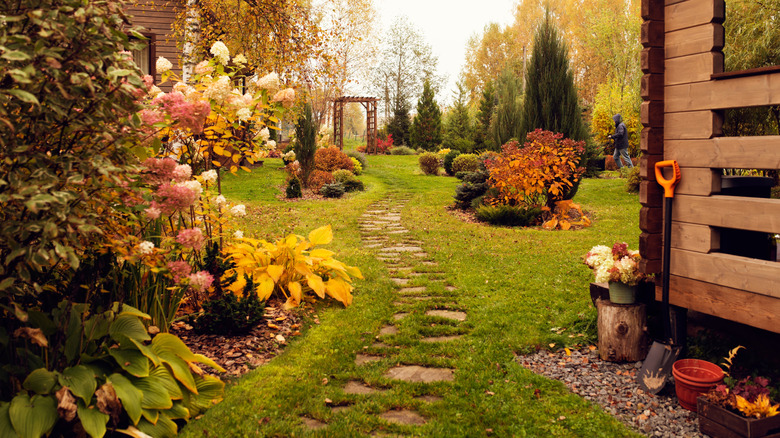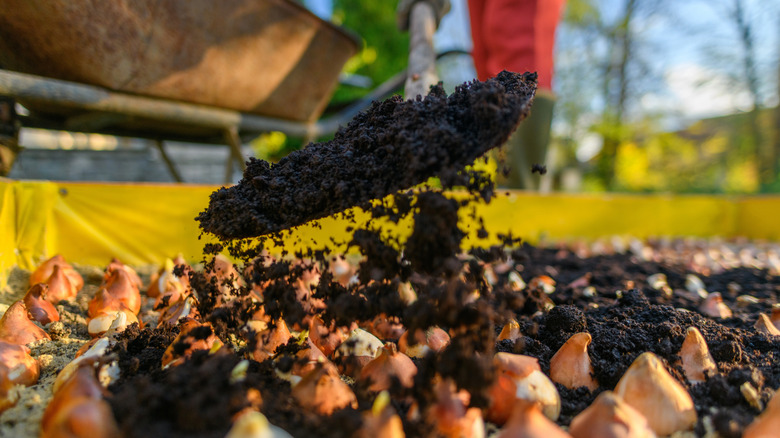Add This Material To Your Garden Beds In Fall For Bigger Blooms In Spring
We may receive a commission on purchases made from links.
The soil in your garden is more than just dirt. For plants, it's a delivery system that provides water and nutrients that are essential to plant growth. The key to thriving plants is creating a healthy, active soil biome, and the real work happens at a microscopic level. Because biochar creates habitat for the microbes in your soil, it's one of the best materials to add in the fall to prep your soil for successful planting in the spring.
Biochar sets the stage for stronger roots and bigger, more vibrant blooms, but rather than thinking of it as a nutrient-rich amendment like manure, it's best viewed as a tool that unlocks the nutrients already present in the soil. With its porous structure and high carbon content, biochar doesn't supply nutrients directly. Instead, it improves soil conditions and provides a safe habitat for billions of beneficial soil microbes, fostering an ecosystem that breaks down organic matter and makes nutrients more accessible to plants.
Humans have been using biochar to amend soils for thousands of years, and while ancient civilizations might not have understood why it helped plants grow, they recognized its benefits. Gardeners today understand that there's a difference between nutrients being present and being available. Soil structure, pH, and water-holding capacity all impact the health of soil biomes and determine whether nutrients in the soil are actually usable by your plants. Adding biochar in the fall improves soil structure, increases water retention, and boosts microbial activity, making it one of the best tips for growing a healthy garden with beautiful blooms.
How to use biochar in your yard and garden
Fall is a good time of year to test the quality of your soil and add amendments like biochar. After the soil is depleted during the growing season, adding biochar and other amendments will give your microbes everything they need to work all winter — albeit more slowly — to condition your soil and make nutrients available for your plants. Once spring comes and your plants start growing again, they'll have all the nutrients they need for robust growth and large blooms.
Whenever you add biochar as a soil amendment, it must be worked into the ground for optimal results. After all, you want it to provide habitat for colonies of beneficial soil microbes in the root zones of your plants, where it will do the most good. Experts recommend "charging" biochar by adding earthworm castings or compost before putting it in your soil, since these amendments contain billions of microbes in every teaspoon. You can either mix the biochar with compost in a 1:1 ratio or spray it with compost tea. Either way, you're inoculating the biochar and jump-starting microbial activity in your garden soil. You can also purchase a pre-charged biochar, such as Foop's Organic Inoculated Biochar, if you want to skip this step.
Biochar works well with any type of soil. In heavy clay soils, it helps break up compaction and facilitates the flow of oxygen, an essential substance for both plants and soil microbes. In sandy soils, biochar acts like a sponge and enhances water retention. Using biochar in the fall does more than simply amend your soil. It's an investment in a long-term, resilient ecosystem that will support healthy, vigorous plants for years to come.

